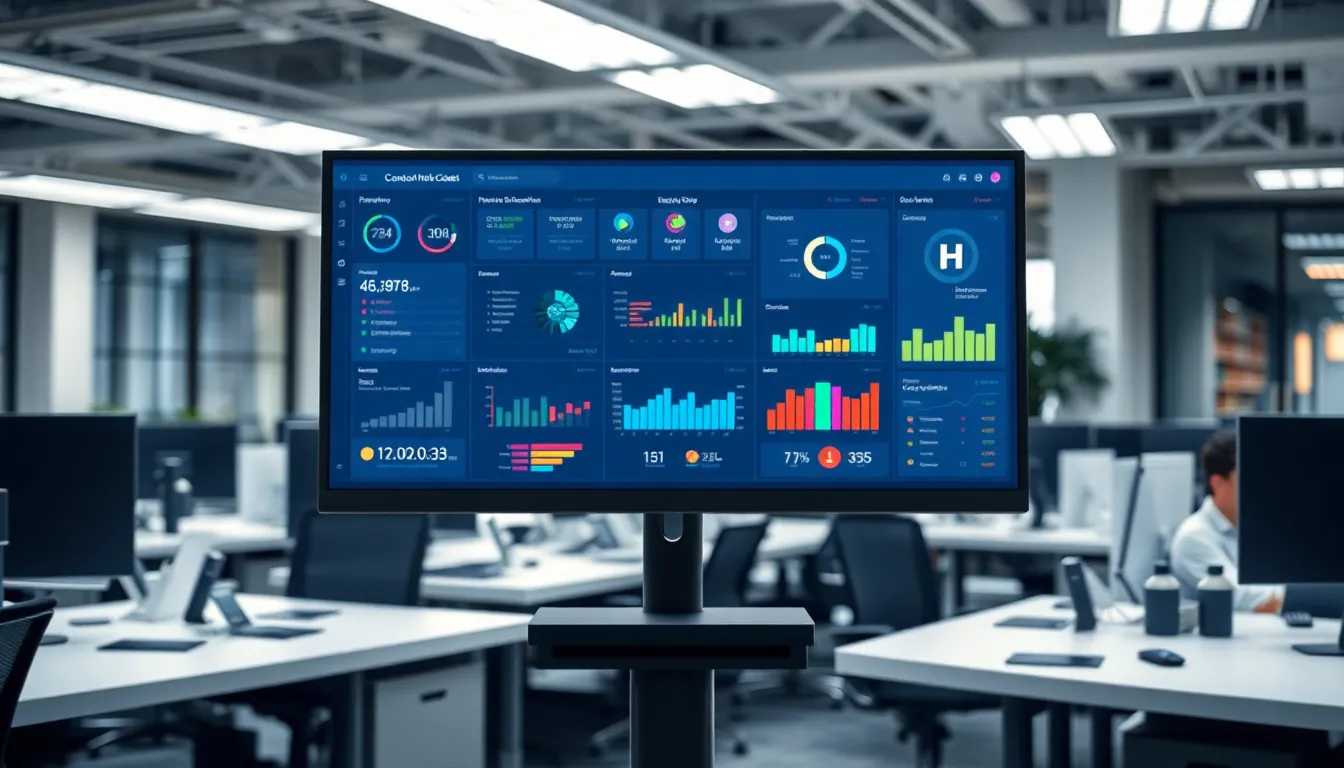Imagine trying to control a spaceship with a remote that has buttons for everything but the actual launch. Frustrating, right? That’s how many feel when managing systems without a centralized control panel. A centralized control panel streamlines operations, putting everything at your fingertips and transforming chaos into harmony.
In a world where multitasking is the name of the game, having a single hub to monitor and manage various functions isn’t just a luxury; it’s a necessity. Whether it’s for a bustling office or a high-tech facility, this tool can save time, reduce errors, and even make you look like a superhero in front of your boss. Let’s dive into how a centralized control panel can make life easier and maybe even a bit more fun.
Table of Contents
ToggleOverview of Centralized Control Panels
Centralized control panels serve as vital tools for managing multiple systems from a single interface. Users gain the advantage of overseeing various operations, reducing the complexities involved with disparate systems. Monitoring tasks becomes straightforward, allowing for improved decision-making.
Such panels streamline processes by integrating disparate functionalities into one location. Efficiency increases as users can access data and functionalities without navigating multiple interfaces. Coordination among teams enhances through shared access to key performance indicators and system statuses.
A major benefit of a centralized control panel is the reduction of human errors. When functions are centralized, redundant actions often diminish. Error tracking becomes easier, facilitating prompt interventions when issues arise.
Performance tracking also benefits tremendously. Analytics tools integrated into a centralized system provide immediate insights into operational efficacy. Historical performance data becomes readily available, aiding in proactive strategy adjustments.
Centralized control panels significantly improve user experience. Simplification of workflows allows users to focus on analyzing data rather than managing multiple systems. Satisfaction levels increase as frustrations decrease, reflecting positively on overall productivity.
These systems adapt to multitasking environments, proving essential in today’s fast-paced workplaces. Flexibility remains a key feature, allowing customization based on user needs. Overall, centralized control panels not only enhance operational efficiency but also foster a more enjoyable work atmosphere.
Key Features of Centralized Control Panels

Centralized control panels offer a range of essential features that enhance operational efficiency and user experience.
User Interface Design
User interface design prioritizes simplicity and intuitiveness, making navigation seamless for users. Color coding and clear labeling aid in quick identification of functions. Visual consistency across the platform improves usability, as users can predict layout and navigation patterns. Interactive elements such as drag-and-drop capabilities enhance workflow efficiency. Customizable dashboards cater to individual preferences, allowing users to tailor displays to specific tasks. Feedback mechanisms, such as notifications and alerts, keep users informed about system statuses and performance metrics.
Integration Capabilities
Integration capabilities serve as a hallmark of centralized control panels. These systems connect with various applications, simplifying data exchange and task execution. API functionality allows for smooth integration with existing software and hardware. As a result, businesses experience improved data accuracy and reduced redundancy. Centralized control panels support cloud-based services, enabling remote access to critical information. Collaboration tools foster teamwork across departments, enhancing overall performance. Ultimately, integrated analytics provide comprehensive insights for better strategic decision-making.
Security Measures
Security measures are crucial for protecting sensitive data within centralized control panels. Advanced encryption techniques safeguard information during data transmission and storage. User authentication protocols, including multi-factor authentication, ensure that only authorized personnel access systems. Regular software updates maintain security resilience against emerging threats. Audit trails track user activities, helping identify potential breaches or unauthorized actions. Compliance with industry standards enhances overall trust in the system. By implementing robust security frameworks, organizations can confidently utilize centralized control panels.
Advantages of Using a Centralized Control Panel
A centralized control panel offers significant benefits for managing various systems efficiently. Users experience streamlined operations and improved productivity across the board.
Enhanced Efficiency
Centralized control panels simplify complex tasks. They consolidate multiple functionalities into one interface, which reduces the time spent switching between applications. Integration of various tools enables faster access to information. Employees can focus on essential tasks instead of navigating several systems. This efficiency boost leads to quicker decision-making and better resource allocation, ultimately enhancing overall workplace performance.
Streamlined Management
Management becomes more effective with a centralized control panel. Overseeing various operations from one location eliminates confusion and redundancies. Continuous access to an integrated system fosters collaboration among team members. Tasks such as assigning roles or monitoring progress occur smoothly and in real-time. A unified interface ensures that everyone is on the same page, leading to improved communication and coordination across departments.
Real-Time Monitoring
Real-time monitoring stands out as a critical feature of centralized control panels. Users receive immediate insights into performance metrics without delays. This instant feedback aids in identifying potential issues before they escalate. Additionally, historical data accessibility supports informed strategic adjustments. Organizations can thus maintain optimal efficiency and adapt promptly to changing circumstances, ensuring they remain competitive in a fast-paced environment.
Challenges and Considerations
Centralized control panels offer significant benefits; however, some challenges arise during implementation and operation.
Initial Setup Costs
Initial setup costs for centralized control panels can be substantial. Budgeting must account for software purchase, hardware investments, and possible subscription fees. Organizations may face additional costs such as training employees and implementing necessary integrations with existing systems. Finding a balance between features and budget is crucial, as selecting the right tools can minimize long-term expenses. Evaluating potential ROI helps organizations determine if the upfront investment aligns with operational goals.
Infrastructure Requirements
Infrastructure requirements play a vital role in the effectiveness of centralized control panels. Reliable internet connections ensure seamless operations, especially when integrating cloud-based applications. Additionally, adequate server capacity supports the processing of data from various systems. Organizations should assess their current technology to identify necessary upgrades, ensuring compliance with security standards. Evaluating compatibility with existing software also streamlines implementation and enhances overall performance.
Embracing a centralized control panel can transform the way organizations operate. By consolidating various functionalities into a single interface users can streamline their workflows and enhance overall efficiency. This integration not only reduces the complexities of managing multiple systems but also minimizes the risk of human error.
With real-time monitoring and analytics at their fingertips teams can make quicker decisions and allocate resources more effectively. While initial setup and infrastructure considerations are important the long-term benefits far outweigh these challenges. Ultimately a centralized control panel fosters a more productive and enjoyable work environment empowering teams to focus on what truly matters.













